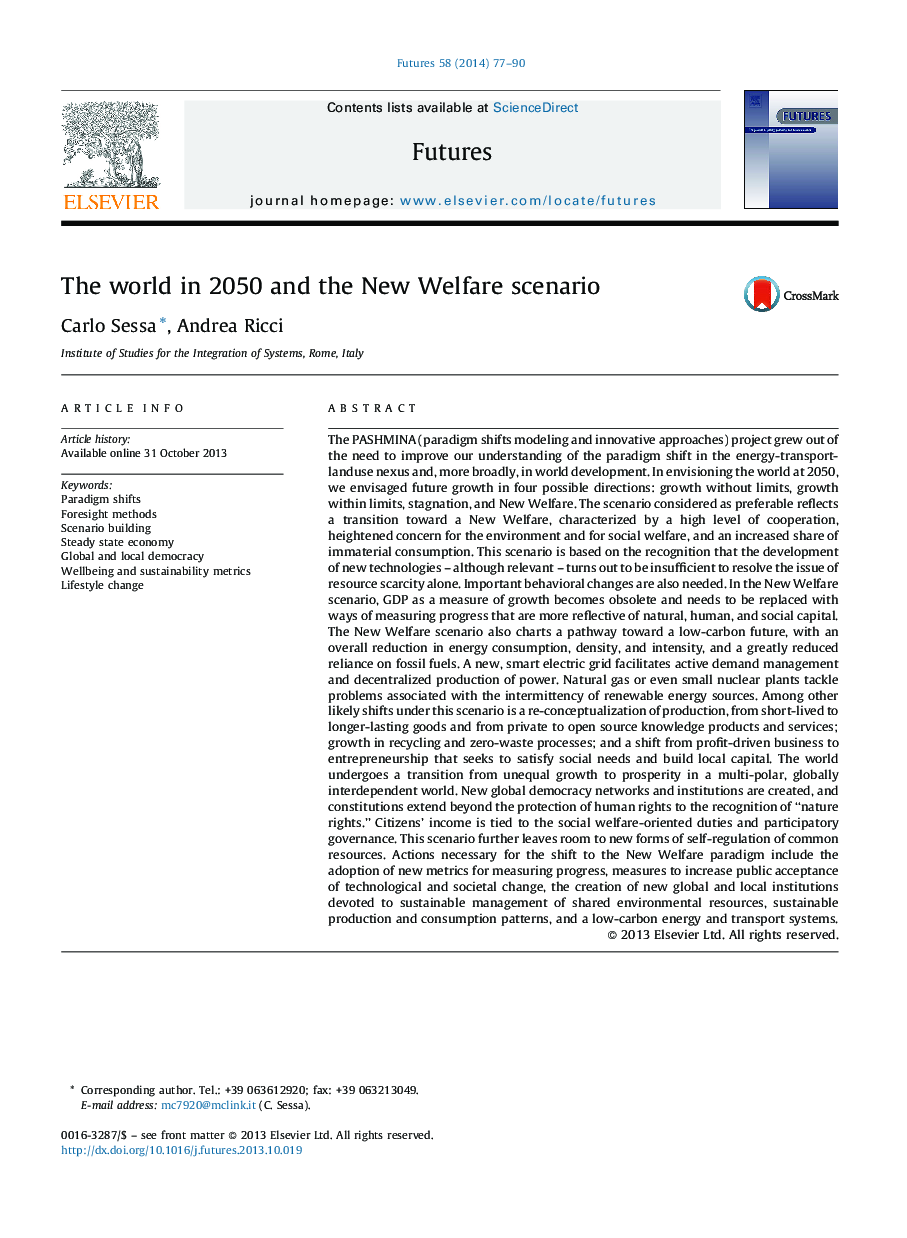| کد مقاله | کد نشریه | سال انتشار | مقاله انگلیسی | نسخه تمام متن |
|---|---|---|---|---|
| 1015509 | 1482771 | 2014 | 14 صفحه PDF | دانلود رایگان |
• Conceptual model to analyze a global paradigm shift at the 2050 horizon.
• The model is applied to frame four alternative global future storylines.
• The New Welfare storyline (Orange World) is discussed.
• Ways for achieving the Orange World normative vision are discussed.
• Key paradigm shifts: intangibles, less working time, more “not just for profit” activities, peer production localization, new global and local democracy institutions.
The PASHMINA (paradigm shifts modeling and innovative approaches) project grew out of the need to improve our understanding of the paradigm shift in the energy-transport-landuse nexus and, more broadly, in world development. In envisioning the world at 2050, we envisaged future growth in four possible directions: growth without limits, growth within limits, stagnation, and New Welfare. The scenario considered as preferable reflects a transition toward a New Welfare, characterized by a high level of cooperation, heightened concern for the environment and for social welfare, and an increased share of immaterial consumption. This scenario is based on the recognition that the development of new technologies – although relevant – turns out to be insufficient to resolve the issue of resource scarcity alone. Important behavioral changes are also needed. In the New Welfare scenario, GDP as a measure of growth becomes obsolete and needs to be replaced with ways of measuring progress that are more reflective of natural, human, and social capital. The New Welfare scenario also charts a pathway toward a low-carbon future, with an overall reduction in energy consumption, density, and intensity, and a greatly reduced reliance on fossil fuels. A new, smart electric grid facilitates active demand management and decentralized production of power. Natural gas or even small nuclear plants tackle problems associated with the intermittency of renewable energy sources. Among other likely shifts under this scenario is a re-conceptualization of production, from short-lived to longer-lasting goods and from private to open source knowledge products and services; growth in recycling and zero-waste processes; and a shift from profit-driven business to entrepreneurship that seeks to satisfy social needs and build local capital. The world undergoes a transition from unequal growth to prosperity in a multi-polar, globally interdependent world. New global democracy networks and institutions are created, and constitutions extend beyond the protection of human rights to the recognition of “nature rights.” Citizens’ income is tied to the social welfare-oriented duties and participatory governance. This scenario further leaves room to new forms of self-regulation of common resources. Actions necessary for the shift to the New Welfare paradigm include the adoption of new metrics for measuring progress, measures to increase public acceptance of technological and societal change, the creation of new global and local institutions devoted to sustainable management of shared environmental resources, sustainable production and consumption patterns, and a low-carbon energy and transport systems.
Journal: Futures - Volume 58, April 2014, Pages 77–90
